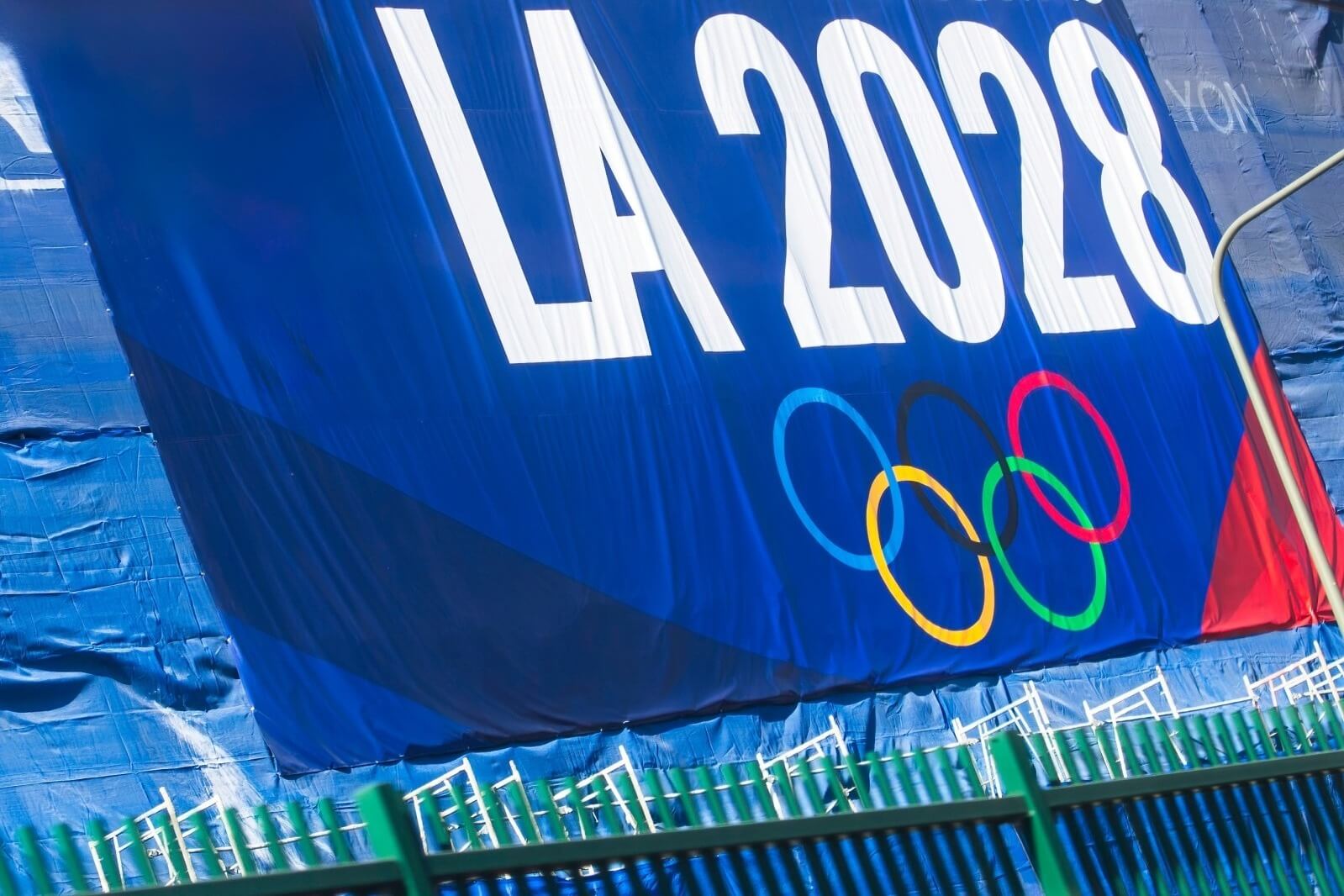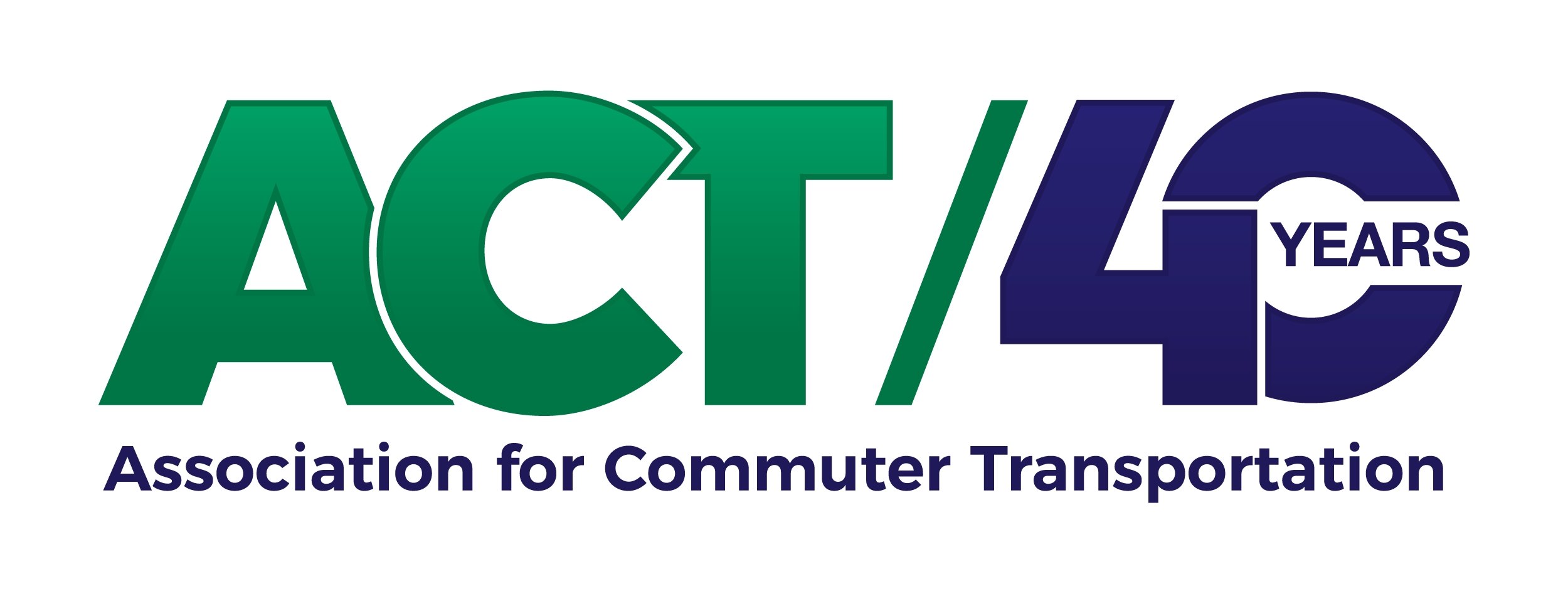Policy Proposals for Mega-Events
TDM Policy for the 2028 Olympics and Beyond

Transportation Demand Management (TDM) strategies are cost-effective tools for cities hosting mega-events, such as the Olympics, the World Cup, the Superbowl, and more, to manage the increased demand to transportation networks from visitors and residents. looking forward to the 2028 Olympics in Los Angeles, act worked with our members to create the following policy priorities.
Expand Park and Ride Facilities
Provide federal funding for the construction of new park and ride facilities to reduce congestion and promote mode-shift. These facilities can serve as transfer points not only for rail but also for carpools, vanpools, and shuttles, creating seamless connections that reduce the number of single-occupancy vehicles entering congested corridors.
Support Establishment of “Games Route Network”
Authorize and expedite the development of dedicated High-Occupancy Vehicle (HOV) lanes for efficient movement during the Games. The “Games Route Network” development is led by Caltrans and would establish dedicated lanes for travel between venues for “Games Family” vehicles, reducing single-occupancy travel and ensuring reliable trips to and between venues.
Develop Mobility Hubs
Invest in multimodal hubs that integrate transit, rideshare, biking, and walking. The influx of visitors will place extraordinary strain on the transportation system, making it infeasible for everyone to drive directly to Games venues. Furthermore, on-site parking at Games venues will be prohibited due to security perimeters established by the U.S. Secret Service. As a result, spectators will need to rely on alternative travel modes. By providing central locations with diverse travel options, mobility hubs make it easier for attendees and residents to travel while reducing the strain on the transportation network. Mobility hubs can also serve as a legacy of the Games, improving access and supporting more convenient daily travel for residents.
Expand Active Transportation Infrastructure
Fund biking and walking connections through new bike lanes, pedestrian corridors, and event-focused “Festival Trails” and “Open Streets” events. Linking venues with safe, active transportation infrastructure reduces road congestion while improving accessibility. This could also involve quick-build projects that are easier to deliver ahead of the Games and help transition toward more permanent improvements.
Ensure Legacy Infrastructure
Improve access to federal funds for post-Games implementation of Transportation Demand Management (TDM) strategies, ensuring long-term transportation efficiency beyond the event. Improvements such as transit priority lanes, park & ride facilities, pedestrian and bike connections, and mobility hubs not only support the event but everyday transportation needs for residents.
Codify the Definition of Transportation Demand Management (TDM) Into US Code
Codify the definition of “Transportation Demand Management (TDM)” federally, specifically including marketing and incentives as TDM strategies. Receiving funds on time and efficiently is essential for successful transportation at the Olympics and beyond. Without a federally codified definition of TDM, local entities receiving funding for TDM projects can face significant delays in delivery, and even denial of funds. A codified definition eliminates the need for regional Federal Highway offices to go through extra steps to determine what is and is not TDM.
Proposed definition: “The term ‘Transportation Demand Management’ means the use of strategies to inform and encourage travelers to maximize the efficiency of a transportation system, leading to improved mobility, reduced congestion, and improved air quality, including strategies that use planning, programs, operations, policies, marketing, communications, incentives, pricing, data, and technology.”
Support TMA/TMOs as Key Partners
Provide dedicated funding for Transportation Management Associations/Organizations to lead outreach and behavior-change initiatives. TMAs/TMOs can coordinate employer and resident engagement, manage public/private TDM strategies, and deliver clear communication campaigns before and during mega-events. TMAs/TMOs may already have in place a range of transportation programs and services that can be more easily expanded or built upon versus creating new initiatives from the ground up.
Fund Enhanced Airports Communications
Support enhanced communications at airports (e.g., at time of airfare purchase, immigration lines, arrival areas) to direct visitors toward transit and shared mobility options. Messaging at points of purchase, immigration, and arrival ensures travelers understand and choose modes that decrease congestion before defaulting to single-occupancy travel.
Tourism Engagement
Provide funding for a regional initiative that promotes transit as the primary mode of travel for Games attendees and visitors. The program would include developing digital travel guides and integrated trip planning tools that highlight transit and active transportation options, while piloting incentive platforms that offer bundled discounts or perks for those who show proof of transit use. Partnerships would be forged with hotels, short-term rentals, and tourism bureaus.
Transit Ambassadors
Provide funding to support the recruitment and deployment of transit ambassadors to provide real-time guidance and support to both spectators and commuters as they travel during the Games. In-person support will be particularly valuable for international visitors who may be unfamiliar with the regional transit network.
TDM Pilot Program: Free Airport Bus/Shuttle Travel
Create a federally funded pilot offering free bus or shuttle service from airports to central event and hotel areas. Free, reliable service is a powerful incentive that shifts visitors away from low-occupancy vehicle use and can set a tone of more permanent multimodal transportation use throughout the Games.
Integrated Ticketing & Journey Mapping
Support the integration of multimodal transportation options into event branding and ticketing, including advanced journey-mapping technologies to improve traveler experience. Make desired travel options part of the event’s identity by offering bundled transit passes, visible wayfinding, and messaging that normalizes and celebrates multimodal travel.
Wayfinding
Provide funding to support the development and deployment of a cohesive wayfinding system that guides travelers to Games venues while encouraging the use of more sustainable transportation options. Beyond the Games, this system can serve as a legacy by enhancing placemaking and improving everyday navigation across the region.
